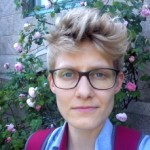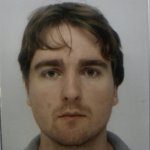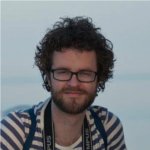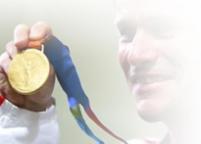|
Special distinctions
|
In addition to the 5 students who obtained the Best Mark of 32, the jury of
the CSC examination is pleased to award a special distinction
to the 6 students below who obtained a mark of 31 and
ranked 6th.
2013 Special
distinctions: all 6 students
with pictures and bio
Individual marks can be provided to students upon request, by
email, to the Examination Coordinator, Ivica Puljak (Ivica [dot] Puljak
[AT] cern [dot] ch) |
Examination: facts and figures
|
2013 |
|
Questions |
34
multiple choice questions were proposed.
After deliberation, the
jury decided that all 34 questions should be validated.
|
|
Pass / No-Pass
threshold |
To be declared
as having successfully passed the examination, the student must have
replied correctly to
50%
or more than 50%
of the
questions and attended the entire scientific programme. |
|
Number of
correct answers for successful pass |
Any student having replied correctly to
17
or more than 17
questions has been declared as having successfully passed the
CSC examination |
|
Number of successful students |
59
students succeeded in the examination. |
|
Rewards |
-
CSC Diploma will be handed over to the students at the occasion of
the closing ceremony.
-
The students with the
highest marks will be announced
at the closing session Friday 30th of August.
-
ECTS Certificates will be given together with the CSC
diploma.
|
|
Marks |
Individual marks will be available on demand by email,
after the closing
session only, from Ivica Puljak (Ivica
(dot) Puljak
AT cern (dot) ch).
|
|
|
|
|
Examination: List of successful students
|
The CSC Jury is pleased to warmly congratulate the following
students who will receive the CSC Diploma as having have successfully passed the 2013 examination
and fully followed the entire programme. |
|
The students
below received the CSC Diploma as having successfully passed the
examination and fully followed the entire programme.
We congratulate
all of them! François Fluckiger, CSC Director |
| Abi Akl, Maya |
| Agtzidis, Ioannis |
| Akishina, Valentina |
| Ameri, Parinaz |
| Antosik, Marta |
| Attikis, Alexandros |
| Bagiacchi, Paolo |
| Beche, Alexandre |
| Beermann, Thomas |
| Bryngemark, Lene |
| Caberletti, Marco |
| Calvet, Ivan |
| Cervenkov, Daniel |
| Chang, Wei-Jen |
| Chinzer, Lisa Azzurra |
| Chytka, Ladislav |
| Contreras-Campana, Christian |
| Dearnaley, William |
| Delort, Charles |
| Dorland, Tyler |
| Ehrhart, Sebastian |
| Ernis, Gunar |
| Fiorini, Benjamin |
| Gouveia, Vtor |
| Hahne, Daniel |
| Hammer, Josef |
| Heikkila, Seppo |
| Ieri, Andrea |
| Jimnez Estupin, Ral |
| Kadochnikov, Ivan |
| Khandanyan, Hovhannes |
| Kucharczyk, Katarzyna |
| Kunze, Jonas |
| Lazaridis, Christos |
| Lettenbichler, Jakob |
| Ljunggren, Martin |
| Lpez Gonzlez, Juan |
| Malta Rodrigues, Alan |
| Mancinelli, Valentina |
| Manzali, Matteo |
| Manzi, Andrea |
| McCrea, Alison |
| Messi, Francesco |
| Montuenga, Pedro |
| Moreno Pascual, Fernando |
| Morgenstern, Marcus |
| Morvaj, Ljiljana |
| Musheghyan, Haykuhi |
| Nguyen, Khoi Nguyen |
| Nikiforou, Savvas |
| Perrey, Hanno |
| Porobic, Tomica |
| Richert, Tuva |
| Rueda, Laura |
| Shadura, Oksana |
| Sripada, Raja Babu |
| Timmerman, Jens |
| Viazlo, Oleksandr |
| Wardzinska, Aleksandra |
59 students receive the CSC 2013
Diploma as having passed the
examination and fully followed the entire programme
2013 CSC Awards: Pictures and Bio
Highest Mark
2013 |
|
CERVENKOV Daniel
|
Charles University,
Prague - Czech Republic |
 |
|
I am a first year particle physics PhD student working on the Belle &
Belle II experiments at the KEKB accelerator in Japan. My task at Belle
is a time-dependent angular CP violation analysis of a specific decay of
neutral B mesons. At Belle II I contribute to the analysis software used
to test the upcoming Belle II pixel detectors (DEPFET technology). Both
projects utilize C++ with extensive use of the ROOT framework libraries,
Python and Bash/csh. I have reasonable experience with Mathematica,
which I use to speed up some of the more tedious analytical
calculations, and Linux OS administration, as it has been my OS of
choice for ~7 years. |
|
Highest Mark
2013 |
|
CHYTKA Ladislav |
Palackı University, Olomouc - Czech Republic |
 |
|
I am a PhD student at Palackı University in Olomouc and a member of
ATLAS experiment where I am an active member of the ALFA and AFP
detector groups. My main task is currently an implementation of the
model of ATLAS forward region - beam pipe and magnet elements - under
the Athena framework to allow full (Geant4 based) simulation together
with all existing forward detectors. I also help with an implementation
of the AFP model under the Athena and with preparatory simulations of
AFP. |
|
Highest Mark
2013 |
|
KADOCHNIKOV Ivan |
JINR, Dubna -
Russia |
 |
|
I have always been interested in both physics and computer science. As I
enrolled in Moscow Institute for Physics and Technology (MIPT) I
sometimes dreamed of being able to simulate a macroscopic object from
the quark level up. Another topic I am very interested in is machine
learning. As part of getting my degree I studied and worked at Joint
Institute for Nuclear Research (JINR). After graduating in 2011 I
continued working at JINR and started my PhD there. At the same time I
shifted focus from physics to IT. Most of my work done at JINR is
related to WLCG, CERN and monitoring. I took part in Tier3 monitoring,
XRootD federation monitoring and data transfer monitoring projects.
Right now I am involved in an effort to integrate HBase and Hadoop as a
Dashboard back-end and use it for data transfer monitoring. |
|
|
|
|
Highest Mark
2013 |
|
PERREY Hanno |
DESY, Hamburg - Germany |
 |
|
I am currently working as Fellow at DESY in Hamburg, Germany. My main
activities are test beam studies for the CMS phase-I pixel barrel
upgrade and the development of a high-rate pixel beam telescope within
the European AIDA project. Together with a colleague I coordinate the
development on EUTelescope, a generic test beam data analysis framework
based on ILCSoft's Marlin application framework and written in C++. I
also work on improvements and modifications of EUDAQ, a flexible and
multi-threaded data acquisition framework written in C++, used in the
telescope data taking. Both EUTelescope and EUDAQ are in use by various
groups, and I participate in the user support. For the CMS test beam
studies I work on the client-side test suit software that communicates
with the testboard/ROC, mainly on UI and USB communication. |
|
|
|
|
Highest Mark
2013 |
|
RUEDA Laura |
CERN, Geneva -
Switzerland |
 |
|
I graduated BSc+MSc in Computer Engineering from the Universidad
Autónoma de Madrid in Spain and I am currently studying for a divengent
second MSc in Information and Knowledge Society at the Universitat
Oberta de Catalunya. I started working at CERN as a technical student in
the IT-CIS-DLT section for the EU Project CRISP and now, I am a fellow
in the GS-SIS-OA group. I am currently working for the EU Project ODIN
on designing an interoperability network of persistent identifiers that
will ease the reuse of data in the scientific community. These
developments would enhance the HEP information system INSPIRE. My
background includes experience in communication and social networks and
I am particularly interested in how technology can help to overcome
scientific and social challenges. |
|
|
2013 Special distinctions: Pictures and Bio
|
Second Highest Mark
2013 |
|
AGTZIDIS Ioannis |
CERN, Geneva - Switzerland |
 |
|
I am currently a student at the department of Electrical and Computer
Engineering at the Aristotle University of Thessaloniki. During my
university studies I gained a wide spectrum of knowledge which varies
from electrical circuits and mathematics to computer programming and
electronics. As a perfect complement to my studies, I am currently doing
a one year internship at CERN IT Department which gives me valuable
working experience of the best quality, on the subject that I am most
interested in. Finally CSC is ideal place to meet people of same
interests, improve my technical skills and enjoy a beautiful island. |
|
|
|
|
BRYNGEMARK Lene |
University of Lund - Sweden |
 |
|
I am doing my second year of Ph.D. at Lund University, within ATLAS. My
thesis will focus on beyond Standard Model physics searches with jets.
This requires thorough knowledge of the jet reconstruction. I have
evaluated an event-by-event correction of jets for pile-up (detector
signals originating from additional proton collisions in the same and
adjacent bunch crossings, overlaid with signal from the triggering
collision). My work resulted in a new standard ATLAS jet pile-up
correction. To further deepen my understanding of our jet measurements I
am also involved in detector operation within the Liquid Argon
calorimeter team. |
|
|
|
|
DELORT Charles |
CERN, Geneva -
Switzerland |
 |
|
I am a French computer scientist currently working at CERN. I have a PhD
in computer science, obtained in 2011 from Paris 6 University, France.
The main focus of my thesis was on multi-objective combinatorial
optimization. I work for the ALICE data acquisition team, where I am
developing a simulation of the data flow for the upgrade of the
experiment that will be implemented in LS2 (2018). I am currently doing
an overview of simulation tools that will be used by a working group to
create the simulation by the end of the year. I am familiar with Linux
and Windows environments and comfortable using C/C++, Java, Python, and
other programming languages. |
|
|
|
|
KUNZE Jonas |
Johannes Gutenberg Universität Mainz - Germany |
 |
|
I am a German Physicist and PhD student working for the NA62 Experiment
at CERN and as Linux administrator at Mainz, Germany. During my diploma
thesis I have developed the PC-Farm and software framework for the
online trigger of NA62. Through this work I have become an expert in
network and parallel programming and my thesis has been honored with an
award. Within my current work I am analyzing the feasibility of using
commodity processors within low-level triggers at high-energy physics
experiments like NA62, LHCb and ATLAS. Using processors enables it to
use general-purpose programming languages like C++ for low-level trigger
algorithms instead of hardware description languages like VHDL. This
would facilitate the handling of low-level triggers and potentially
reduce acquisition costs. Privately I have developed the social network
www.metalcon.de which has become the biggest German database concerning
heavy metal music. |
|
|
|
|
LJUNGGREN Martin |
Lund University -
Sweden |
 |
|
I finished my master's degree analysing test beam from a prototype time
projection chamber (TPC) constructed by the LCTPC collaboration for R&D
towards a detector for the ILC. I have since started a PhD in the Alice
collaboration and am currently involved in studies for an upgrade of the
Alice TPC, where I am analysing test beam data from a prototype
(GEM-based) readout system. I am also working on simulations of the
upgraded TPC. Here I use mainly ROOT and possibly Geant in the near
future. Another part of my Phd-work is the analysis of anisotropic flow
of protons, pions and kaons in Pb-Pb collisions using data from the
Alice-experiment. Here I use mainly ROOT (and AliROOT). Other than C++,
I am somewhat familiar with Fortran and Matlab. In operating systems, I
am familiar with Linux and Windows. |
|
|
|
|
WARDZINSKA Aleksandra |
CERN, Geneva - Switzerland |
 |
|
I am a software engineer with 6 years of work experience, most of it
acquired at CERN. My current work activities are focused around EDMS
(Engineering & Equipment Data Management Service), which stores the
technical documentation of CERN and the LHC. I do programming mostly in
Java and PL/SQL, I also design features for EDMS and supporting software
(external APIs, batch data imports). I supervise a small team developing
a new web interface for EDMS. I have MSc in Computer Science obtained
from Warsaw University of Technology. |
|
|
|












